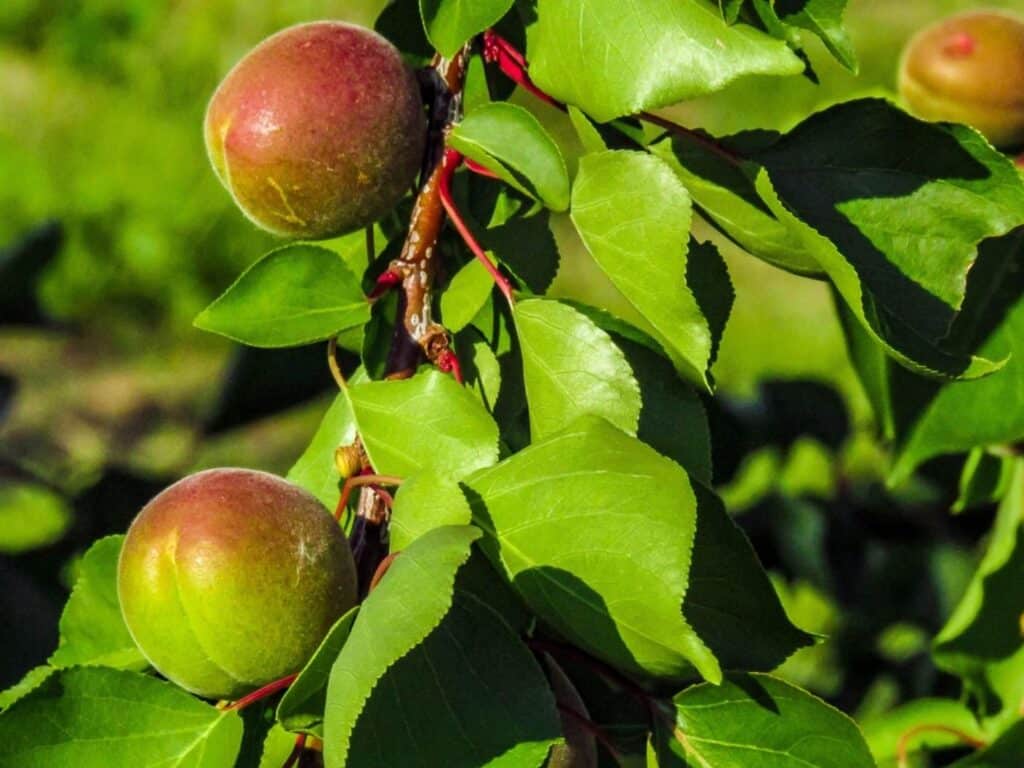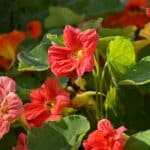When your peach tree’s vibrant green leaves start to turn yellow, it can be a cause for concern. This subtle shift in color is more than just an aesthetic issue—it’s a cry for help from your tree. Whether you’re a seasoned gardener or a novice tree enthusiast, noticing yellowing leaves can leave you puzzled and worried about the health of your beloved peach tree.
Understanding why peach tree leaves turn yellow is crucial to addressing the problem effectively. It’s not always a sign of doom; sometimes, it’s a manageable issue that, with the right knowledge and care, can be corrected.
This article will guide you through the common causes of this discoloration, offering insights and solutions to help you restore your tree’s health and vigor. Let’s dive into the world of peach trees together, turning your concern into action.
Understanding Why Peach Tree Leaves Turn Yellow

When your peach tree leaves start showing a yellow hue, it’s a wakeup call. This section dives deep into the causes, helping you tackle the issue head-on.
Nutrient Deficiencies
Believe it or not, your peach tree is quite the diva when it comes to nutrients. A lack of essential elements like nitrogen, iron, or magnesium can cause the leaves to lose their lush green color. Nitrogen deficiency often manifests as yellowing leaves, starting at the older, lower leaves and moving up.
Iron deficiency shows up as yellowing between the leaf veins on young leaves, while magnesium deficiency usually targets older leaves first. Spotting these subtle signs early on assists in taking corrective action swiftly.
Water Stress Factors
Too much or too little, your peach tree’s relationship with water is a delicate balance. Overwatering can drown the roots, reducing oxygen supply and leading to yellow leaves.
Conversely, underwatering stresses the tree, depriving it of moisture and nutrients, resulting in similar yellowing symptoms. Establishing the right watering routine prevents these issues, ensuring your peach tree stays hydrated just right.
Pest Infestation and Disease
Peach trees are no strangers to pests and diseases, which can also cause leaves to turn yellow. Common culprits include peach leaf curl, which makes leaves pucker and discolor, and aphids, tiny pests that suck on the leaves, stressing the tree.
Additionally, fungal infections like powdery mildew can coat leaves with a white film, disrupting photosynthesis. Identifying these invaders early offers the best chance at saving your peach tree from undue stress.
Common Diseases That Cause Yellowing in Peach Trees
When your peach tree leaves start turning yellow, it’s a wakeup call that something’s off. Below, we dive into some usual suspects – fungal diseases and bacterial infections – making it easier for you to pinpoint and tackle the issue.
Fungal Diseases
Fungal diseases love peach trees a little too much, and they’re a common reason behind those yellow leaves. Peach Leaf Curl is a prime example. This unwelcome guest causes leaves to curl and discolor, making them look more yellow than green. It thrives in cool, wet conditions, so keeping your tree dry and well-pruned helps in prevention.
Another fungus, Powdery Mildew, leaves a white, powdery coating on leaves, eventually turning them yellow. Good airflow around your tree and fungicide applications can keep this disease at bay.
Bacterial Infections
Bacterial infections can also turn peach tree leaves yellow. Bacterial Leaf Spot, for example, starts as small, water-soaked spots on leaves which then turn yellow, often with a shot-hole appearance after the infected part falls off. This bacteria loves warm, wet weather, so improving air circulation and reducing leaf wetness can help prevent its spread.
Fire Blight is another bacteria that can cause trouble, leading to wilting and yellowing of leaves as if they’ve been burned. Pruning infected limbs and avoiding excessive nitrogen fertilizer are key strategies to prevent its spread.
Pests That Contribute to Yellow Leaves
Peach tree leaves turning yellow signals distress, often linked to issues like pests. By identifying specific pests and understanding their impact, you can take steps toward healthier peach trees.
Aphids and Their Impact
Aphids are small but mighty when it comes to causing trouble for your peach trees. These pests suck the sap from the leaves, leading to yellowing, curling, and there’s potential that leaf drop.
They secrete a sticky substance known as honeydew, which can attract other problems like sooty mold. Managing aphids early involves rinsing them off with water or introducing beneficial insects, such as ladybugs, that feed on them.
Root-Knot Nematodes
Root-knot nematodes are a bit sneakier, living in the soil and attacking your tree’s roots. Infested roots may lead to yellow leaves as the tree struggles to absorb necessary nutrients and water.
Identifying these pests can be tricky since they’re underground, but poor growth and yellowing leaves in seemingly ideal conditions may point toward their presence. Implementing crop rotation and using nematode-resistant rootstocks are key strategies in combating root-knot nematodes.
Environmental and Cultural Factors
Soil Composition and pH Level
Believe it or not, the dirt your peach tree calls home matters a lot. If the soil composition isn’t quite right or the pH level strays too far from the peach tree’s sweet spot, yellow leaves could be your tree’s way of saying, “I’m not happy.”
Peach trees thrive in well-drained, loamy soil with a pH between 6.0 and 7.0. If your soil is too sandy, clay-rich, or the pH is off, a soil test may well just reveal the root of your troubles. Adjusting the soil composition or using lime or sulfur to correct the pH could bring back those lush, green leaves.
Incorrect Watering Practices
Watering your peach tree may well seem like a no-brainer, but there’s a fine line between quenching its thirst and drowning it. Too little water and the tree can’t take up essential nutrients, leading to yellow leaves. Too much water, conversely, suffocates the roots, causing similar symptoms. Peach trees prefer consistency, with moist (not waterlogged) soil.
During dry spells, a deep, weekly watering helps more than daily sprinkles. If you’re dealing with waterlogged soil, consider improving drainage around the tree. Listening to what your peach tree’s leaves are telling you can prevent over or under-watering, keeping it healthy and happy.
Addressing Yellow Leaves on Peach Trees
Yellow leaves on peach trees signal your tree’s plea for help, guiding you to take action. This section delves into actionable steps you can take to reverse the yellowing and promote healthy growth.
Adjusting Fertilization Practices
Over or under-fertilizing can turn peach tree leaves yellow, a classic case of too much love or neglect. If you’re on the over-enthusiastic side, ease up on the fertilizer. Your peach tree craves balance, not an overdose of nutrients.
On the flip side, a tree looking more yellow than green may well be starving for nutrients. A soil test determines the missing elements, enabling you to choose the right fertilizer. Remember, it’s about giving your tree what it needs, not what you think it needs.
Implementing Proper Irrigation
Water is life, but too much or too little can send your peach tree into a yellow frenzy. The trick is finding that Goldilocks zone of watering—not too much, not too little, just right. Too much water suffocates the roots, leading to yellow leaves, while too little leaves them thirsty and also yellow.
Check the soil moisture by feeling it a few inches below the surface. If it’s dry, it’s time to water; if it’s soggy, give it a break. Consistent soil moisture keeps your peach tree happy and its leaves green.
Managing Pests and Diseases
Pests and diseases are like unwanted guests at your peach tree’s dinner party, causing yellow leaves and a host of other issues. Aphids and root-knot nematodes suck the life out of your tree, literally and figuratively.
Deal with these critters by introducing beneficial insects that consider them a tasty snack or by applying appropriate treatments to affected areas. For diseases like Peach Leaf Curl and Fire Blight, pruning away infected areas helps contain the spread. Remember, prevention is key. Regular checks and early interventions can save your peach tree from turning into a yellow mess.
Preventive Measures for Healthier Peach Trees
Regular Monitoring and Maintenance
Keeping your peach trees in top shape requires consistent care. Check on your trees regularly to spot any signs of stress or disease early on. This practice allows you to act swiftly, correcting issues before they escalate.
Proper pruning, removing dead or diseased branches, ensures better air circulation and light penetration, vital for the tree’s health. Additionally, cleaning up fallen leaves and debris around the tree base reduces the risk of pests and diseases finding a home.
Choosing Resistant Varieties
When selecting peach trees for your garden, opt for varieties known for their resistance to common diseases and pests. Research and consultations with local nurseries can guide you to the best choices for your area.
By starting with a resistant variety, you significantly decrease the likelihood of dealing with yellow leaves due to disease. This step, combined with regular maintenance, sets the foundation for a thriving peach tree that’s less likely to succumb to the usual culprits of yellowing leaves.
Frequently Asked Questions
What causes yellow leaves on peach trees?
Yellow leaves on peach trees are often caused by nutrient deficiencies, water stress, pests, and diseases such as Peach Leaf Curl and Fire Blight. Environmental factors like improper soil composition and pH levels also play a significant role.
How can I prevent yellowing leaves on my peach tree?
To prevent yellowing leaves, ensure regular tree maintenance including proper fertilization, appropriate irrigation to maintain soil moisture, and pest and disease management. Additionally, choosing disease-resistant varieties and practicing proper pruning are effective preventative measures.
What are some effective solutions for yellow leaves on peach trees?
Effective solutions include adjusting fertilization practices to address nutrient deficiencies, implementing proper irrigation techniques, and managing pests and diseases through beneficial insects and appropriate treatments. Regular monitoring and maintenance of the tree are crucial.
Can adjusting soil pH help prevent yellow leaves on peach trees?
Yes, adjusting the soil pH can help prevent yellow leaves on peach trees. Ensuring the soil pH is appropriate for peach trees contributes to better nutrient absorption, which can alleviate yellowing leaves caused by nutrient deficiencies.
How important is choosing a resistant variety for peach tree health?
Choosing a resistant variety is very important for peach tree health as it reduces the risk of diseases that can cause yellow leaves. Resistant varieties are specifically bred to withstand common pests and diseases, promoting the overall vitality of the tree.
Up next:







